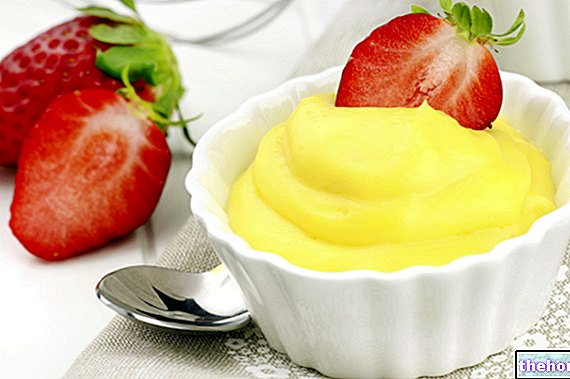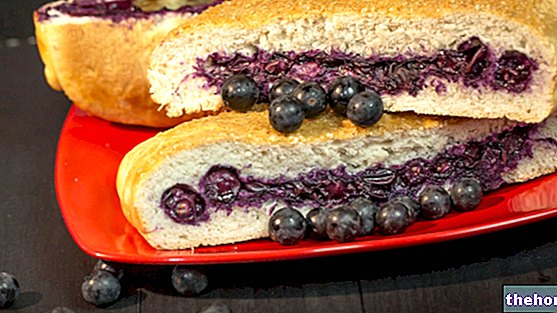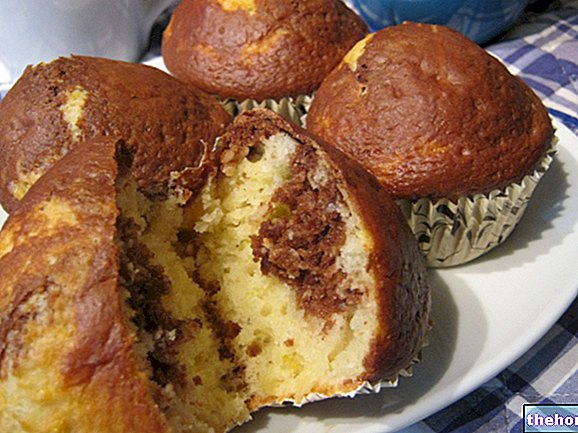The brioches undoubtedly represent the modern evolution of the Italian breakfast. If once it was usual to start the day with a simple cup of milk and a little bread, today brioches are often found on the breakfast tables. . And this is precisely the recipe that I would like to suggest today, the brioche in fact, which as we know are a rather caloric dessert. Here, to make them a little less caloric and nutritionally better than the classic ones, today I propose these delights in their integral version, sweetened with honey. Let's find out together the doses and ingredients to prepare wholemeal brioches.
Video of the Recipe
Problems with playing the video? Reload the video from youtube.
Identity Card of the Recipe
- 273 KCal Calories per serving
-
Ingrediants
To decorate
- a sprinkle of powdered sugar
For the leavening
- 110 g of Manitoba flour
- 80 ml of water
- 20 g of brewer's yeast
- 5 g of honey
To stuff
- About 100 g of jam
For the main dough
- 60 g of butter
- 40 ml of water
- 70 g of honey
- grated rind of untreated lemon
- 1 pinch of salt
- 60 g (1 medium) of eggs
- 190 g of Manitoba flour
- 120 g of wholemeal flour
Materials Needed
- Bowls of various sizes
- Film
- Wooden ladles
- Sharp knife or wheel
- Brush
- Baking paper
- Baking trays
- Rolling pin
- Teaspoons
- Pastry board
- Latex gloves (optional)
Preparation
To prepare the wholemeal brioche it is recommended to start in the evening, preparing the so-called biga (leavening): in this way, the first dough will rise very well and slowly. In fact, wholemeal flour is rather "heavy" and develops less gluten than Manitoba flour; for this reason, the more the chariot is left to rise, the softer the result will be.
- Prepare the leaven (or biga) by dissolving the brewer's yeast in warm water, sweetened with a teaspoon of honey. Mix the dissolved yeast with the Manitoba flour with a wooden ladle, until the mixture is very soft and sticky. Leave the leaven to rest for one night, well covered with cling film.
- When the leaven is well swollen, add the remaining Manitoba flour, wholemeal flour, salt (possibly avoiding direct contact with the leaven), honey, melted butter and egg. Flavor everything with the grated zest of a lemon or with an aroma to taste. Probably, it will be necessary to add 30-40 ml of water to make the dough soft and smooth (the amount of water depends on the type of wholemeal flour used). Work everything for a long time to facilitate the formation of gluten: let it rest in a glass bowl for a couple of hours, until the dough has doubled in volume.
- When it is swollen and soft, divide the dough into two parts and make 2 discs with the help of a rolling pin.
- Cut each disc into 8 wedges: pour a teaspoon of jam on the base of each triangle obtained. So wrap each triangle on itself, starting from the base, trying to trap the jam in the dough by crushing it with your fingers to prevent it from coming out during the subsequent leavening or cooking.
The advice OK
To facilitate the shaping of the brioches, it is advisable to brush the tip of each triangle with a little water, which will act as glue.- Arrange the brioches on two trays lined with baking paper, taking care to maintain a certain distance between one and the other to prevent them from swelling and sticking together. Leave to rise again until doubled in volume: it will take about an hour.
- Once doubled in volume, you can proceed with cooking the brioches: bake the cakes at 180 ° C and cook for 15 minutes.
- Allow to cool and sprinkle to taste with a little icing sugar.
Alice's comment - PersonalCooker
For those who like to start the day with a smile, here are my wholemeal croissants. From a nutritional point of view, the wholemeal version of these sweets is better because it has a higher content of dietary fiber first of all, minerals and vitamins of group B. I hope you liked my wholemeal brioches: try the brioches too ( a delicacy to savor during breakfast!).Nutritional values and Health Comment on the recipe
Brioches with wholemeal flour are a sweet baked product and, as such, should be consumed in moderation. Alice's recipe is less caloric and richer in fiber than the traditional one, but the fact remains that it brings both saturated fat and cholesterol; even simple sugars, despite being considerably contained compared to a commercial analogue, contribute to making brioches with wholemeal flour a food to be consumed occasionally. The recommended portion is around 40-45g in raw dough, for a total of about 120kcal.




























